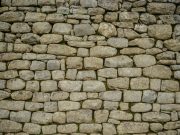
The hill, north on the city of Šiauliai, has become a sacred destination for residents of Lithuania for the reason that devastating battles in 1831 contrary to the Russian Empire. Called the November Uprising, the battles triggered extensive casualties for Lithuania. Like a tribute to the people who died, relatives started leaving crosses for the unassuming hill.


What began being a trickle of mourners soon become a flood of crosses and pilgrims. But it wasn’t until 1850 how the hill, named Jurgaičiai, was renamed the Hill of Crosses.
When Tsarist authorities outlawed similar crosses on roadsides also in cemeteries in 1863 as part of their general rejection of religion and religious symbols, many traveled to the hill to erect their memorials as the show of defiance and determination.
With the brand new name along with a ban on public crosses, the hill became inundated with new installations — though many found it as being a dangerous and forbidden destination, particularly over the periods of Soviet rule.
The Hill of Crosses has become the topic of frequent raids and demolitions as a result of Soviet authorities. In 1961, a late-night operation saw each of the crosses bulldozed around the hill. Wooden crosses were burnt in the exact location, concrete structures were crushed, and then for any metal was salvaged as scrap or melted down, leaving the hill bare.
But determined pilgrims returned shortly afterwards with new crosses, and authorities removed them at least four more times. So fervent were the rebuilds that eventually the demolitions ceased, as well as the cross-covered hill inadvertently had been a indication of hope and perseverance.


Today you can find an estimated 100,000 densely-packed crosses to the small hill, a number that is constantly on the climb from the time that Lithuania achieved independence.
Although Lithuania was the very last country in Europe to use Catholicism, along with its residents faced ongoing persecution in making crosses, cross-making is a vital past-time there — it\’s that UNESCO recognized its importance in 2001.
The haphazard group of crosses reflects this tradition. They cover a multitude of designs — some are a couple of feet high and beautifully ornate, others can be smaller and many more humble. They’lso are combined with 100s of holy statues and rosaries, turning the destination right into a creepy memorial maze and something of the country’s most intriguing landmarks.


Spurred on by using a visit from Pope John Paul II, who held full of there in 1993, the hill has developed into a popular destination for international pilgrims and curious visitors. And even though the 1000s of crosses are undeniably eerie, the hill can also be a host to somber tranquillity and reflection.


The hill is seven miles north of Šiauliai, and that is easily reached by train. From Šiauliai, one can find regular buses that go to the Domantai stop — in which the Hill of Crosses is a 1.2-mile walk.
































